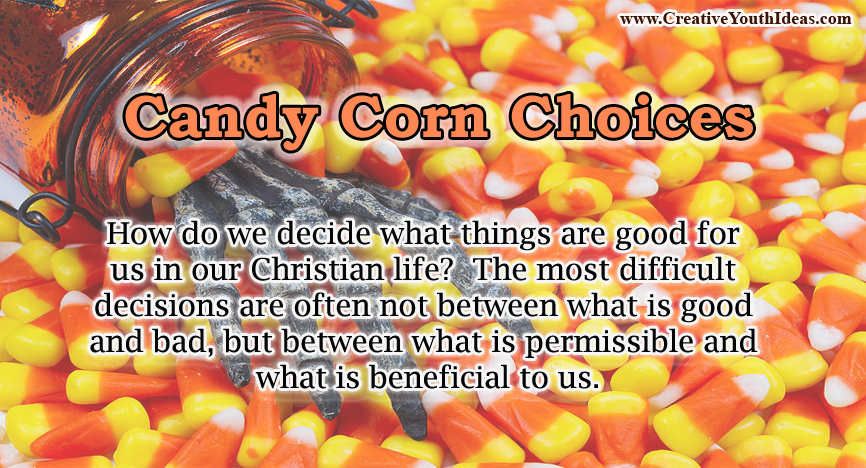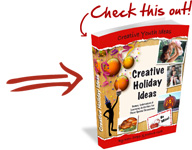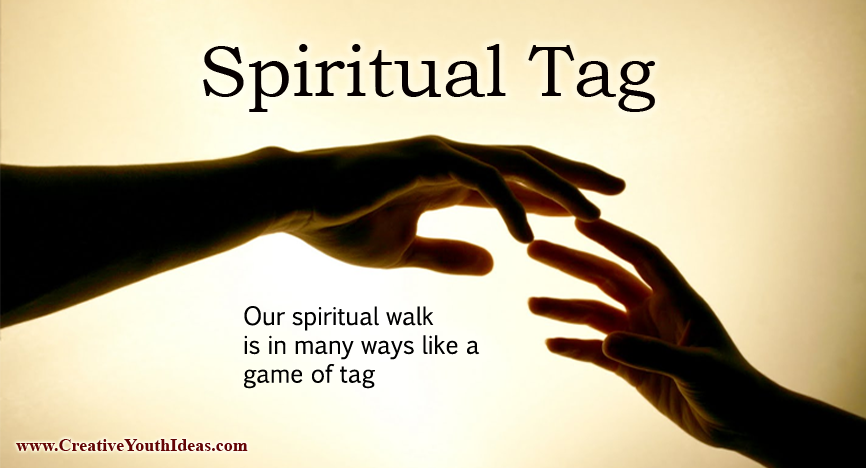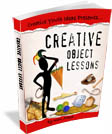 Candy corn is the top-selling Halloween candy and the most talked about candy during Halloween, but it is also talked about as the worst candy for you. Candy Corn isn’t real corn. It is almost pure sugar – a sweet imitation of the real thing which isn’t good for us in any way. So it’s good, but it’s bad. How do we decide what things are good for us in our Christian life? The most difficult decisions are often not between what is good and bad, but between what is permissible and what is beneficial to us.
Candy corn is the top-selling Halloween candy and the most talked about candy during Halloween, but it is also talked about as the worst candy for you. Candy Corn isn’t real corn. It is almost pure sugar – a sweet imitation of the real thing which isn’t good for us in any way. So it’s good, but it’s bad. How do we decide what things are good for us in our Christian life? The most difficult decisions are often not between what is good and bad, but between what is permissible and what is beneficial to us.
PLEASE SHARE THIS IDEA ON FACEBOOK – CLICK HERE
Candy Corn Games
- Candy Corn Cluckers – Fill a bowl with dried corn kernels or peanuts and add several pieces of candy corn. Blindfolded youth must retrieve the candy corn from the bowl within a designate amount of time without eating the dried corn kernels / nuts. The teen that retrieves the most candy corn in the designated time limit wins.
- Candy Corn Pitching – Youth take turns pitching ten to twenty candy corn kernels, one at a time, into a bowl from a set distance. You might choose to have various bowls of different sizes and at different distances. Display the points based upon difficulty. Keep score of how many kernels end up in the various bowls. The winner is the youth with the highest score after three rounds.
- Odds or Evens – Each player starts out with the same number of candy corn kernels. Players rotate about the room pairing up with others. When they find a partner, one youth hides a few kernels of candy corn in his hand. The other youth must guess if the number of corn kernels is odd or even. If guessed correctly, the player can add the kernels to his own collection. Youth take turns hiding and guessing, until one player has all the corn or until a specified time limit! [With this game the candy corn can get a little messy 🙂 to avoid the mess use individually wrapped mints or other candy.]
- Candy Corn Drop – Have the youth stand on a sturdy chair or other safe elevation and drop the pieces down into a person’s mouth who is lying on the floor. The youth who gets the most candy corn into the person’s mouth in a given time frame wins.
- Candy Corn Toss – Place the pieces of candy corn into a small sealed sandwich bag or similar cellophane bag and have a “candy corn bag” toss. Number pails, bowls, or plastic pumpkins, placing them in a row perpendicular to A start line, pail number one being closest. youth stand behind the line and throw candy cord bags into each consecutive bucket. Keep score or issue prizes for hitting each target.
- Candy Corn Bocce – On a smooth surface like a table, one youth acts as the referee, sliding out the first piece of candy corn. He then marks this piece with a toothpick. Contestants take turns sliding 4 different pieces as close to the referee’s mark as they can. The referee determines which piece is the closest, awarding that youth or team a point. Play until someone gets ten points.
- Candy Corn Hunt – Fill small plastic bags with candy corn and hide them throughout the yard. Send players out into the yard to find the bags until every bag has been claimed. You may also divide the players up into groups and see which group can find the most bags. This game can also be played inside, or at night with flashlights.
- Corny Scramble – Toss handfuls of candy corn onto a large table clear of obstacles. Give each youth a treat bag and make the scramblers wait until you say “Boo!” On the signal, the players must run forward and collect as many pieces of candy corn as possible. Once all the kernels have been picked up, see who has the most candy in his bag.
- Guess the Kernels – Fill a decorated jar or Halloween treat pail with pieces of candy corn, making sure you count how many pieces you put into the container. Set the container up on a table supplied with slips of paper, pencils and a bucket to put the paper slips into. Each participant may take one guess at how many pieces of candy are inside the container. The player who guesses the closest to the actual amount wins all the candy corn.
- Kernel Relay – Mark a starting line and a finish line with masking tape on the floor roughly 15 feet apart. Set an empty bowl for each player at the finish line and a bag of candy corn and a spoon at the starting line. Have each player stand at a bag of corn and take the spoon in hand, placing a single kernel on the spoon. The youth will then carefully race a piece of corn to an empty bowl at the finish line, trying not to let the candy fall off the spoon. Each player will continue to race from the bag of corn to the bowl to see how many pieces of candy she or he can get into the bowl within the allotted time of one minute. If a player drops a kernel from the spoon, that youth must then run back to the bag of candy corn and get another piece to start over again.
- Candy Corn and Straws Relay – Divide the youth into teams and give every person on a team a plastic straw and a paper cup. Place a piece of candy corn in the first team member’s cup. The youth must create a vacuum in the straw to pick up the candy corn and place it into the next person’s cup. First team to get the candy corn into the last person’s cup wins. If the candy corn is dropped on the floor, the team must start completely over at the beginning.
- Where’s the Corn? – Line up three plastic cups out on a tabletop in front of a youth. Place a single piece of candy corn under one of the cups, allowing the player to see which cup the corn is under. Begin to change the cups’ formation around for five to ten seconds. The youth then must try to remember which cup is hiding the candy and will continue to play and collect candy corn until he or she chooses the wrong cup. Give the earned candy corn to that player, and continue on with the next player until every youth has won pieces of candy.
- Candy Corn and Spoons – Divide into teams, have each team to line up single file, and have a cup with one or more pieces of candy corn for each team. Give each player a spoon. The first player on each team picks up a piece of candy corn with the spoon, spins around in place 3 times, then passes the candy to the next person on the team. Candy Corn can only be touched with the spoon. If the candy is dropped the team must start over again from the beginning. First team to get all the marbles down the line wins.
- Chopsticks and Candy Corn – Using a pair of chopsticks and a couple shallow bowls or saucers, each youth is given one minute to move candy corn from one bowl to the other using only the chopsticks. Only one hand can be used to hold the chopsticks. The youth to transfer the most candy corn wins.
- Tick-Tack-Corn – Pair the youth up into groups of two and sit them down at a table across from each other. Give the pair a tick-tack-toe board, and one player a handful of regular candy corn pieces. The other youth will receive a handful of the chocolate variety of candy corn, making one player the yellow team and the other player the brown team. Have the players play tick-tack-toe using their corn until one player wins, or until there is a draw. This may continue for as many rounds as desired.
- Musical Candy Corn – Fill treat bags with candy corn for as many youth as are playing, minus one. Set the bags up in a circle on a tabletop or floor. Have the players circle around the bags at a steady walking pace while some music plays. Stop the music at random, at which point each player tries to grab the bag closest to him. Whoever fails to grab a bag or candy corn in time is out of the game, and the players still in must set the bags back up in the circle. Remove one of the bags from the circle, then start the music up again. Continue this until the game is down between two players and one treat bag. Whoever snatches up the last bag is the game winner.
- Candy Corn Foosball – Have two youth stand at either end of a large table. One youth throws candy corn (or a plastic bag of it) to the other end of the table, and the other youth must block it from going through and making a goal. Use a dry sponge for blocking making sure it is one that will not scratch your table.
- Candy Corn Straw Relay – Race to see who could move the most candy corn from the table into a bowl in sixty seconds using only a single straw.
- Candy Corn Catch – You’ll need one plastic pumpkin with a handle for each team, one bag of candy corn per team, and a belt or length of rope for each team. Use the rope or belt to secure the pumpkin around the waist of one player per team. Have the team member who is wearing the pumpkin stand about 7 to 10 feet away from the players who will be throwing the candy corn. The player wearing the pumpkin may move around to try and catch the candy corn as it is thrown without using their hands to deflect the candy corn in any way. Once everyone has thrown the candy corn, take the pumpkin and count the candy corn inside. The youth with the most candy corn wins.
TAKE IT TO THE NEXT LEVEL
MAKE IT SPIRITUAL
- What are some of the differences between real corn and candy corn?
- Which is good for you? Bad for you?
- What other things in life are good for you? Bad for you?
- How do you know the difference?
Candy corn may not kill you, but it most certainly is not the best for you. It may taste sweet, but the sugar rush doesn’t last and it really isn’t something that is good for you. Corn is healthy and good for us, but candy corn, is really just sugar. It’s a sweet imitation of something good. In life there are many things which may seem good, but are not good for us. BUT how can we decide what is good for us and what is not?
MAKE IT PRACTICAL
Some decisions are not simply a matter of right and wrong, but a choice between what is permissable, what is good, and what is best. These are often the toughest decisions.
Here are some guidelines:
- Is this action Scripturally based–does Scripture support or condemn it (Matthew 4:4, 7, 10; I Timothy 3:16-17)?
- How would this affect my witness for Christ if others knew about it (Matthew 5:13-16; I Thessalonians 5:21-22)?
- Would Jesus put his name on this for a stamp of approval? (Colossians 3:17)
- Does this fall into the classification of good thinking? (Philippians 4:8)
- Will this degrade or defile my body (the temple of the Holy Spirit)? (I Corinthians 6:19)
- Will this sooner or later make a slave out of me? (I Corinthians 9:27, 2 Peter 2:19)
- Does this have the “smell” of evil on it? (1 Thessalonians 5:22)
- Will my indulgence in this tend to weaken someone’s faith? (I Corinthians 8:13)
- Does it benefit us or others? (I Corinthians 6:12a, 10:23)
- Can you do it with a clear conscience? (Romans 14:22)
- Does it bring Glory to God, meet his approval? (1 Corinthians 6:19-20; 10:31-33; 2 Corinthians 5:9)
- Does it help lead others to Christ? (1 Corinthians 10:33)
- Would I be ashamed to be doing this thing when Christ returns (Matthew 24:42-46)?
- Does this action hurt others (Romans 14:20-21; Galatians 5:13-15)?
MAKE IT PERSONAL
- What are some of the things I allow as substitutes in my life for the real things?
- Which of the above considerations is new to me?
- Which of the above considerations is most difficult for me?
- What can I do this week to be more Christlike?
- How can I allow Christ to have more influence in the daily decisions of my life?
SCRIPTURE
1 Corinthians 10:31-11:1 – “So whether you eat or drink or whatever you do, do it all for the glory of God. Do not cause anyone to stumble, whether Jews, Greeks or the church of God – even as I try to please everyone in every way. For I am not seeking my own good but the good of many, so that they may be saved. Follow my example, as I follow the example of Christ.”
ROMANS 12:2 – “Do not conform any longer to the pattern of this world, but be transformed by the renewing of your mind. Then you will be able to test and approve what God’s will is – His good, pleasing and perfect will.”
PLEASE SHARE THIS IDEA ON FACEBOOK – CLICK HERE
 Creative Holiday Ideas
Creative Holiday IdeasGames and Activities in Celebration of common Holidays.
Creative Holiday Ideas has over 300 pages of ideas to help you plan not only your next Fall Festival or Halloween Alternative event, but also most of the other common holidays. If you’ve ever wondered what you’re going to do for the holidays and how you’re going to do it, this resource is for you.





